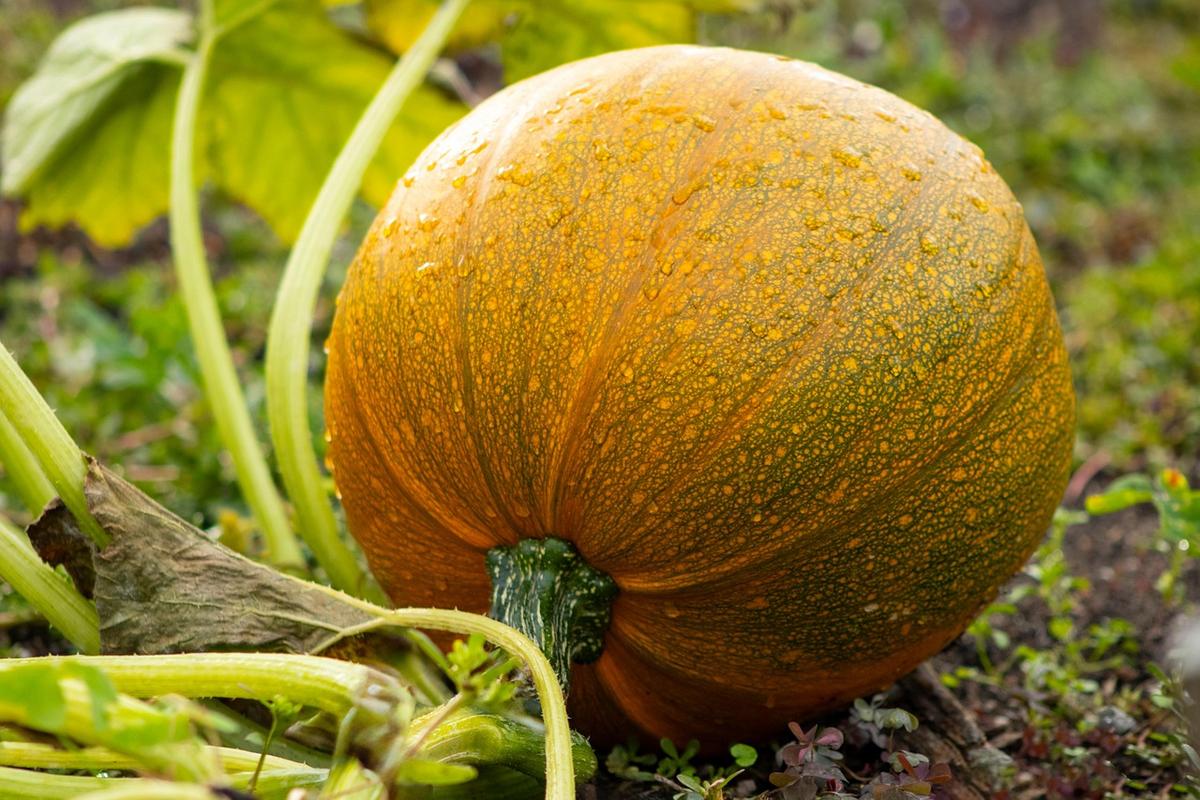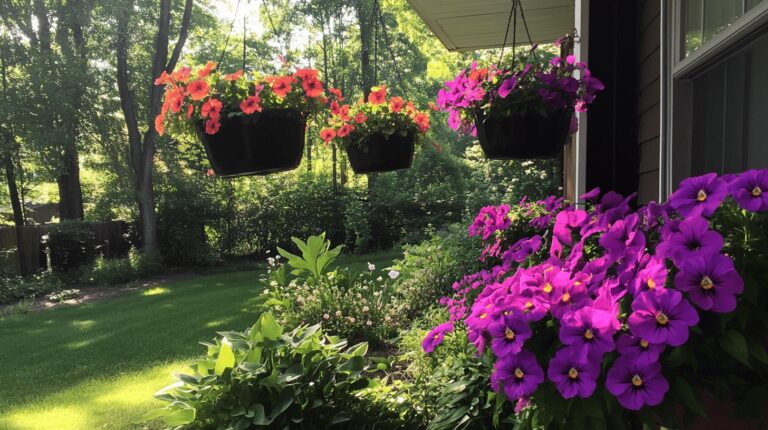Growing Heirloom Squash: A Complete Guide to Time-Tested Varieties
Heirloom squashes offer something truly special for today’s gardeners. These time-tested varieties have thrived through centuries of cultivation, delivering exceptional flavors, stunning appearances, and reliable garden performance that many modern hybrids simply can’t match. Whether you’re seeking visual appeal on the vine or rich taste on the dinner table, these heritage gourds promise to elevate your backyard harvest.
The Rich History of Heirloom Squashes
Archaeological evidence reveals that squash cultivation began over 8,000 years ago in the American Southwest and Mexico. Early cultivators carefully selected plants with larger fruit and sweeter flesh, establishing the foundation for today’s treasured varieties. Modern heirloom squashes trace their lineage directly to these first domestic populations, carrying genetic traits shaped by generations of seed exchange among indigenous peoples, farmers, and dedicated home gardeners.
The term “heirloom” typically refers to varieties introduced before 1951, when commercial hybrids first entered seed catalogs. These selections carry rich cultural traditions and cooking heritage, preserved by gardeners who faithfully save seeds from one season to the next. Their enduring reputation stems from outstanding taste, dependable yields, and remarkable plant vigor in home gardens.
Essential Growing Tips for Success
Getting Started
Plant your squash seeds outdoors after all danger of frost has passed, allowing the vines eight to twelve weeks to set fruit. In regions with shorter growing seasons, choose fast-maturing or bush-type varieties to ensure ripe fruit before the first cool nights arrive.
For earlier harvests, start seeds indoors four to six weeks before the last frost date. Transplant seedlings once soil temperatures reach at least 60°F and no risk of late freeze remains. Direct sowing works perfectly when soil warms fully in late spring.
Soil and Care Requirements
Provide rich, well-drained soil with consistent moisture throughout the growing season. Side-dress with compost or balanced organic fertilizer when vines begin to trail. Since many squash vines sprawl across 50 square feet or more, consider training certain types on sturdy wire or wooden trellises to improve air circulation around leaves and fruit.
To prevent heavy gourds from tearing the vines, cradle developing fruit in slings made from old pantyhose or mesh bags. Ground-set fruit benefits from a layer of straw mulch to reduce rot and soil contact.
Pest and Disease Management
Common pests like squash vine borer, cucumber beetles, and squash bugs can weaken vines or spoil fruit. Rotate squash to different bed areas each season and mulch between rows to discourage soil-borne threats. Lightweight row covers protect tender seedlings from moths but should be lifted once flowers open to permit essential pollinators.
Handpicking insect eggs and larvae from leaves effectively cuts infestations without chemicals. Additionally, inspect foliage weekly for early pest detection and swift intervention.
Powdery mildew and downy mildew often appear as white or yellow patches on leaves during humid weather. Remove affected foliage and improve air circulation around vines to slow spread. Organic sprays combining copper fungicide or sulfur dust help manage outbreaks when applied at first signs of infection. Water at soil level rather than overhead to keep leaves drier.
Pollination and Fruit Set
Successful fruit set depends on abundant pollinators visiting your squash blossoms. Squash plants produce separate male and female flowers that open early in the day for only a few hours. Male blooms have straight stems, while female blossoms show a miniature fruit at the base.
If pollinator activity lags in your garden, transfer pollen manually from stamen to stigma using a soft artist’s brush. This simple technique ensures proper fruit development and maximizes your harvest potential.
Harvesting and Storage
To harvest winter squash for long-term storage, wait until the rind resists thumbnail pressure and the vine begins to dry back. Use a sharp knife or pruners to cut fruit from the vine, leaving a two-inch stem stub attached. Cure the gourds in a warm, dry location for one to two weeks, then store in a well-ventilated cool area where many varieties keep for three to six months.
Seed Saving Traditions
Seed saving works best with fully ripe winter squash. After harvesting, cure fruits in a warm, dry spot for two to three weeks. Slice open mature gourds, remove seeds, and rinse thoroughly to remove pulp. Spread seeds on trays or screens until completely dry before storing in labeled packets in a cool, dark area. Most summer squash seed remains viable only if fruit matures on the vine, so many gardeners prefer purchasing fresh seed each year.
Outstanding Heirloom Varieties to Grow
Tromboncino (Zucchino Rampicante)
This vigorous climbing variety carries exceptional resistance to squash vine borer thanks to its thick, smooth stems that discourage egg-laying and larval feeding. The unusual fruits curve and twist dramatically, often reaching three feet long. Young pale-green gourds make excellent summer squash, while mature fruits develop tan skin and butternut-like sweetness perfect for fall cooking. Train these productive vines on fences, arbors, or sturdy trellis frames for best results.
Honeynut
Developed from Cornell University’s breeding program, Honeynut combines butternut and buttercup lines for extraordinary sweetness and velvety texture. These compact fruits measure four to five inches long, starting mottled green and ripening to warm orange-red. Each stores exceptionally well—up to six months—in cool, dry conditions. The bushy vines suit containers or vertical supports, where improved air flow helps reduce mildew and other leaf diseases.
Green Striped Cushaw
This striking variety produces distinctive crook-necked gourds with pale skin beautifully streaked in dark and light green. The vigorous vines yield dependable harvests while showing strong resistance to squash vine borer and other common pests. The flesh offers mild sweetness with medium texture and pale color. Mature gourds can grow up to eighteen inches long and ten inches wide, though thin skins mean these are best enjoyed soon after harvest.
Seminole Pumpkin
Native to Florida and cultivated by Seminole, Creek, Miccosukee, Muscogee and Calusa tribes, this variety thrives in hot, humid conditions. Long, leafy vines produce six-inch, bell-shaped fruits with firm rinds and rich orange flesh that tastes sweeter than typical butternut squash. Harvest when fruits reach mature size in early fall, or pick young for tender summer squash. Thick stems help fend off vine borer and powdery mildew naturally.
Lakota
This stunning variety presents pear-shaped fruits cloaked in deep crimson-orange skin mottled with contrasting green that appears hand-painted. Each squash weighs between four and eight pounds and contains smooth, nutty orange flesh perfect for baking. Originating from a century of crosses in backyard gardens and later with Hubbard varieties, the University of Nebraska stabilized this selection for reliable performance through first frost.
Red Kuri
With a name meaning ‘chestnut’ in Japanese, Red Kuri offers dense, creamy flesh and gentle, sweet flavor that surpasses many standard pumpkins. Its melon-orange fruits, weighing three to four pounds, grow on tidy, compact vines ideal for small beds or patio containers. Each plant yields two to five round or teardrop-shaped squashes that mature in roughly ninety-five days, making this an excellent choice for gardeners with limited growing windows.
Pink Banana
This elongated variety commands attention with its salmon-pink skin and generous size, sometimes stretching two feet in length. Inside, the bright golden-orange flesh is tender and sugary, while the narrow seed cavity maximizes flesh yield. Each fruit can weigh ten to twelve pounds. Originating in Argentina and Uruguay, this heirloom became a favorite of early American settlers and remains prized for fall displays and sweet baking applications.
Spaghetti Squash
Also called gold string melon, this variety traces back to precolonial U.S. and Mexico, where its pasta-like strands delighted growers. When roasted or boiled, the pale yellow flesh separates into ribbon-like threads that serve as an excellent low-carb noodle substitute. Each fruit reaches eight to twelve inches long, and its neutral flavor pairs beautifully with sauces, cheeses, or simply butter and fresh herbs.
Galeux d’Eysines
This French heirloom stands out for its buff-peach hue and distinctive wart-like sugar lumps that develop under the skin. Nicknamed the ‘peanut’ pumpkin after its bumpy exterior, it contains velvety orange flesh with impressively high sugar content. Each round gourd may reach twelve inches across and weigh ten to fifteen pounds. Its sweet meat shines in soups, pies, or sauces, and it stores well for up to six months.
Table Queen
Introduced in 1913 by the Iowa Seed Company, this diminutive acorn squash set the standard for single-serving winter gourds. The shiny dark-green fruits weigh about one pound and house bright yellow-orange, buttery flesh. Their compact vines suit smaller plots or raised beds perfectly, and the high sugar level makes them especially well-suited for baking halves with maple syrup or savory herb stuffing.
Table King
This variety earned All-America Selections honors in 1974 after University of Connecticut breeders focused on rapid maturity and compact growth habits. Vines reach only four feet yet produce heavy yields of dark-green acorn squash in about eighty days. Each fruit matures to one to two pounds and presents the same sweet, fine-textured yellow flesh that home cooks adore in traditional acorn varieties.
Delicata
Known as a dessert squash since its 1894 introduction, Delicata boasts one of the highest sugar contents among heirloom varieties. Fruits grow about eight inches long and four inches wide, with cream-colored skin beautifully banded in green and orange. The tender skin becomes edible after cooking, eliminating the need for peeling. Slices roast or sauté quickly, delivering sweet, nutty flavor. Since Delicata doesn’t store as long as other varieties, enjoy it in fall or freeze portions for winter meals.
Rouge Vif d’Étampes (Cinderella Pumpkin)
This classic variety first appeared in Paris gardens of the 1880s and inspired the well-known fairy tale coach design. Its flattened, ribbed fruits sport deep melon-orange exteriors and weigh from fifteen to twenty pounds. The mild, sweet flesh works beautifully in pies and purées, while its robust rind lends itself to extended storage well into winter and creates standout tableside décor.
Black Beauty Zucchini
Dating back to the 1920s and earning top honors in All-America Selections trials, this summer squash produces dark-green, almost black fruits on compact, bushy plants. The impressive harvest develops in just fifty to fifty-five days. The thin skin requires no peeling, and the tender, creamy interior excels in everything from sautéed zucchini fries to creamy soups.
Why Choose Heirloom Varieties
Beyond their mouthwatering flavors, many heirloom squashes feature dramatic colors and shapes that make them natural centerpieces in autumn harvest décor. These varieties offer gardeners the opportunity to connect with agricultural history while enjoying superior taste and reliable performance. Furthermore, saving seeds from your harvest allows you to maintain these precious genetic resources for future generations while reducing your gardening costs.
Whether you’re drawn to the climbing vigor of Tromboncino, the compact sweetness of Honeynut, or the stunning appearance of Lakota, heirloom squashes bring both beauty and flavor to your backyard harvest. Start with one or two varieties that match your growing conditions and taste preferences, then expand your collection as you gain experience with these remarkable plants.







